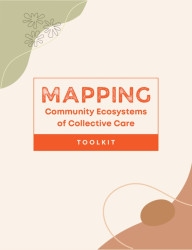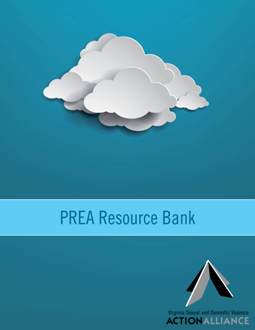Resources Library: Intervention & Services
Start a Search:
Mapping Community Ecosystems of Collective Care

By Shannon Perez-Darby and Andrea J. Ritchie
Since the 2020 Uprisings, there has been an explosion of interest, activity, and organizing around community-based approaches to building safer communities free from the violence of policing. Throughout this period, Interrupting Criminalization has been supporting these efforts by sharing expertise built over decades of organizing for and practicing transformative justice-based approaches to building liberatory communities with resources, toolkits, webinars, podcasts, skill-shares, trainings, cohorts, and learning and practice spaces.
In many of these spaces, and within broader campaigns and movements to divest from policing and invest in the building blocks for safer communities, critical questions and conundrums began to surface from organizers. At the core of these concerns are the questions of:
- How do we build shared definitions, values, and practices of safety across neighborhoods and organizations working within a city?
- How do we weave our small, often relatively new community safety projects — ranging from mutual aid formations, to transformative justice practitioners, to neighborhood defense organizations, to community fridges, to violence interruption and crisis response teams operating at hyper-local levels — into robust, palpable neighborhood and city-wide ecosystems of care that people can feel, trust, and rely on more fully to collectively build greater safety and wellbeing?
- How do we relate to state institutions and resources as we are doing so?
This toolkit offers some resources, responses, and additional questions to consider based on our work and practice spaces.
In particular, this toolkit emerges from the work of our Creating Community Ecosystems of Collective Care Cohort, which launched in March of 2022 and featured over a dozen organizations working in community safety coalitions in Miami, Durham, NC, Seattle, Milwaukee, Phoenix, Minneapolis, and Atlanta. This cohort consisted of groups who were already engaged in this work; it was designed as a virtual space for organizers to learn, practice, and strategize together toward building more robust community ecosystems of care at the neighborhood and city-wide levels.
In addition to breaking isolation, cross-pollinating across communities, and creating a virtual community of practice, the goal was to collectively create resources to support communities beyond the cohort who are grappling with similar questions. This toolkit is that vision come to life.
As communities face increased policing, criminalization, and organized abandonment; mounting state violence, repression, and authoritarianism; escalating white supremacist, homophobic, and transphobic violence; and climate collapse; building skilled, coordinated, expansive, and robust ecosystems of collective care is only becoming more and more essential to collective survival.
Maternal Mortality Review – Each Death Matters
Virginia’s multidisciplinary Maternal Mortality Review Team reviewed nearly 400 cases of pregnancy-associated death occurring between 1999 and 2007. This brief article was published by the National Women's Health Network and authored by Victoria M. Kavanaugh, RN, PhD, Maternal Mortality Review Team Coordinator with the Virginia Department of Health, Office of the Chief Medical Examiner. In the article, Dr. Kavanaugh summaries Virginia data and emphasizes the need for maternal mortality reviews as a means to develop recommendations for interventions and prevention strategies to prevent future deaths. These recommendations apply to a wide array of fields, including prenatal health care, social work, psychiatry, emergency care, dietary services, health care, and advocacy.
Pet Abuse and the Link to Domestic Violence

Sheltering Animals for Abused Families (http://www.richmondspca.org/saaf)
SAAF (Sheltering Animals for Abused Families) Program is a partnership between the Richmond SPCA and the YWCA, with the purpose of providing a safe, temporary shelter to care for the pets of abused women and children.
Safe Havens Mapping Project – Virginia
The entities included in this listing either provide sheltering services for the companion animals of domestic violence victims, have a relationship with an entity that does, or provide referrals to such facilities.
https://awionline.org/safe-havens?distance[postal_code]=&distance[search_distance]=25&distance[search_units]=mile&state=Virginia
Virginia Consolidated Cruelty Statutes
https://www.animallaw.info/statute/va-cruelty-consolidated-cruelty-statutes
Domestic Violence and Animal Cruelty - ASPCA Resources Including What Law Enforcement Can Do About It
https://www.aspca.org/fight-cruelty/report-animal-cruelty/domestic-violence-and-animal-cruelty
National Link Coalition – Working Together to Stop Violence Against People and Animals
Rich source of information and guidance.
http://nationallinkcoalition.org/
RedRover Domestic Violence Safe Escape Grants
RedRover offers financial assistance for victims of domestic violence and their pets through our Safe Escape grant program. The goal of the program is to help families with pets safely escape domestic violence together. Grants may be provided for temporary boarding and veterinary care.
http://www.redrover.org/domestic-violence-safe-escape-grants
American Humane Association: Facts About Animal Abuse & Domestic Violence
http://www.americanhumane.org/interaction/support-the-bond/fact-sheets/animal-abuse-domestic-violence.html
PREA Part 1: What is the Prison Rape Elimination Act (PREA) Resource Bank?

If you are an advocate or an employee of a correctional facility or a juvenile detention facility, this online Resource Bank is for you – here you will find a collection of essential PREA resources, research, toolkits, templates, training, and more.
What is PREA?
PREA is the first United States federal law dealing with the sexual abuse/assault of people who are incarcerated. The intention of PREA is to address the prevention, reduction, and elimination of sexual assault and rape within all correction settings, including juvenile facilities.
Let’s Be Effective: Integration, Coordination, Consistency
If PREA is to be effective, it is critical that the key stakeholders implementing the standards and providing services for the people who are incarcerated do so in an integrated and coordinated way.
The PREA Resource Bank is designed to address a variety of perspectives and disciplines while also providing tools and resources focused on integrating and coordinating the multiple points of contact that a person who is incarcerated will encounter.
This Resource Bank is divided into 7 sections: 1. Back to Basics 2. PREA in Practice 3. Special Populations 4. Advocacy in Focus 5. Corrections in Focus 6. Key Reports & Research and 7. Training on Demand. In the Related Resources section at the bottom of this page, you can click on each section.
REQUEST TRAINING: Training and Technical Assistance. The Action Alliance Training Institute offers Training on Request and Technical Assistance on PREA. For more information: http://www.vsdvalliance.org/#/training/by-request.
PREA Part 2: BACK TO BASICS: What is PREA? What are the Rules?

PART 1: BACK TO BASICS: What is PREA? What are the Rules?
PREA is the first United States federal law dealing with the sexual abuse/assault of people who are incarcerated. The PREA Resource Bank, which offers a collection of essential PREA resources, research, toolkits, templates, and training, is divided into 7 sections.
Part 1, Back to Basics, is a good place to start. This section provides the statute, Department of Justice Standards, information about confidentiality and ethics, and the basics about sexual abuse in correctional facilities.

